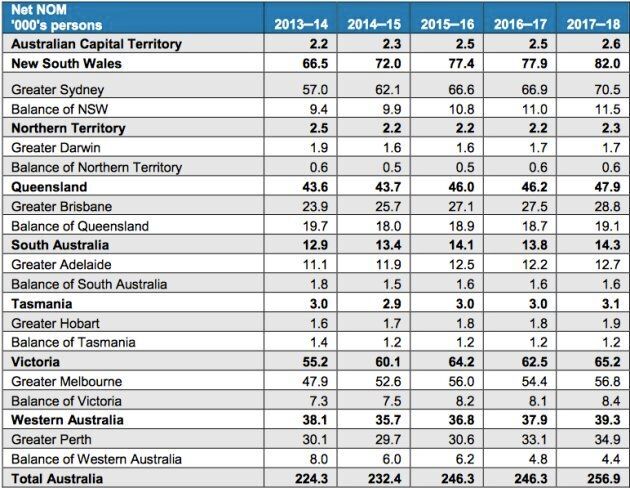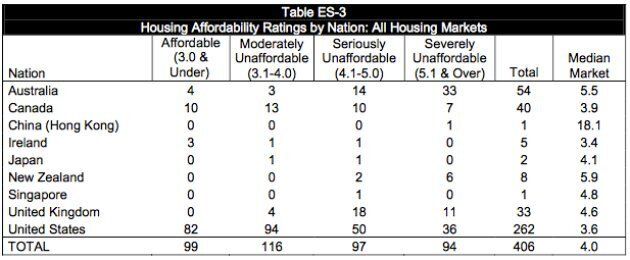Former Prime Minister Tony Abbott and businessman Dick Smith said last week Australia's housing affordability crisis could be solved by slashing immigration.
So, does this claim stack up? Could reducing net migration have a positive effect on housing affordability? The Huffington Post Australia spoke to two economists in the field, and well, it's not that simple.
The Housing Industry Association's senior economist Shane Garrett said reducing immigration would have wide ranging effects on the economy.
"Continued immigration is very, very important for Australia's long-term prosperity," he said.
He argues immigration is helping to offset the increasing number of Australians who will reach retirement over the next decade.

"Should immigration become more restrictive, then the balance between those that have retired and those that are old enough to continue working will become unfavourable in a way which will cause the dependency ratio to increase," he said.
In other wards, there'll be fewer workers to support those of retirement age.
But immigrant labour has also played an important role in building homes in Australia, Garrett said.
"If we look to housing specifically and the role of immigrants, it's important to bear in mind that a lot of the new home building that took place around Australia last year -- when it reached record levels -- a good portion of that was actually conducted by immigrants.
"Had that not been the case, the cost of delivering that additional dwelling supply would have been considerably more expensive and the end result would have been fewer homes would have been built."
Immigrants are engaged in all facets of delivering new homes.Shane Garrett
Professor Peter Phibbs, a geographer, planner and social economist at the University of Sydney said there some fundamental economic logic behind the suggestion, but it could come at larger cost to the economy.
"You'd probably take the heat out of the market to some extent, not to a large extent. But you'd create problems -- your migrant stream is doing other things, like keeping your economy running," he said.
"It didn't make a lot of sense in that it trying to fix one problem and just creating another one. One of the reasons Australia is one of the few countries not to have a recession is we've had a level of population growth that's been able to sustain the economy."
Both Garrett and Phibbs said reform of supply-side areas, such as taxation on new housing, could be used to achieve a reduction in house prices without targeting immigration.

"It's going to be brought about by reform of taxation, planning and land supply," Garrett said, referring to immigrant labour in home construction.
Both Prime Minister Malcolm Turnbull and Treasurer Scott Morrison have dismissed curbing housing tax concessions, such as negative gearing and capital gains tax, while NSW Premier Gladys Berejiklian last week said the tax system needs to be looked at in terms of housing affordability.
There were 26 severely unaffordable major housing markets around the world in 2016, according to Demographia International. Hong Kong topped the list as 'severely' least affordable; Sydney came second in that category, followed by Vancouver and Auckland.
The least affordable 10 also includes Melbourne, Demographia said in its 2017 survey.
Melbourne will be gaining 17 new outer suburbs to try and ease the pressure on the city's housing crisis. #7Newshttps://t.co/UOmELGw4Zr
— 7 News Melbourne (@7NewsMelbourne) February 28, 2017
Garrett cited a HIA study which found as much as 40 percent of the cost of a new home in the Sydney market goes on taxes.
"It includes stamp duty, GST and excessive infrastructure charges which all serve to cause the end price of a new dwelling to mushroom," said Garrett.
He said most immigrants coming to Australia rent rather than buy their homes.
"So immigration shows up on the rental radar, it's not as if they come and immediately buy a house when they land in the country," he said. "Any effect on the housing market would likely be on the rental side, rather than the home purchase side.
"It would certainly cause changes to happen in certain parts of the rental market were there any restriction on numbers, but the number of homes being bought would not change that much in the short term. "
ALSO ON HUFFPOST AUSTRALIA